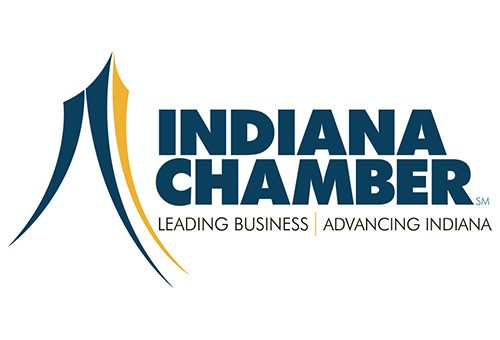
INDIANAPOLIS — While Indiana has built one of the most competitive business climates in the country in the last few decades, the state must be courageous enough to identify its shortcomings and bold enough to tackle them. That’s the mindset behind the Indiana Chamber of Commerce’s comprehensive new playbook for the state.
Indiana Prosperity 2035 – A Vision for Economic Acceleration is the organization’s third iteration of a decades-long initiative coordinated through the Indiana Chamber Foundation. The objective is to provide a roadmap to drive growth, transformation, and success for Hoosiers and their enterprises, says Indiana Chamber President and CEO Kevin Brinegar.

“It’s worth stressing that Indiana Prosperity 2035 is more than an update. It’s a new vision and an acceleration to push Indiana’s economy to even greater heights. Achieving the goals in the plan will benefit all Hoosiers, both businesses and citizens alike.”
The plan was developed through 18 months of work with a volunteer task force, comprised of researchers, issue and policy experts, business leaders, and coalition partners – and led by Larry Gigerich, executive managing director of Ginovus in Fishers and a nationally recognized leader in economic development.
Indiana Prosperity 2035 is organized around six pillars with a total of 31 goals integrated among those policy areas. The pillars in the plan include:
Workforce – A focus on increasing the value Hoosiers place on education and continual improvement in skills in an ever-changing economic and jobs environment; significantly increasing attraction and retention of talent to the state; and increasing the labor force participation rates of working-age Hoosiers.
K-12 Education – Significant, arguably dramatic increases in the proficiency of Indiana students in math and language arts; expanding pre-K educational programs; increasing educational opportunities and achievement for minority students; and addressing the serious problems in smaller schools and districts around the state.
Economic Growth, Innovation, and Entrepreneurship – Preserve and enhance Indiana’s strong business and regulatory climate; continue to drive expansion in high-tech industries and the implementation of new technologies in our economy; significantly improve the state’s business start-up ratings, particularly for minority entrepreneurs; and move the state to one of the most productive for workers and enterprises in the nation.
Superior Infrastructure and Energy – Investments are necessary to continue to improve the state’s infrastructure to not only meet current needs but to strategically position the state and regions within the state for economic development opportunities and the implementation of new technologies.
Quality of Place Strategies – Talent attraction and retention are critical in this economy and even more so in the rapidly evolving one of the future. Promote, invest, and implement regional partnerships around the quality of place investments; lead the Midwest in population growth and stabilization in middle-size communities; improve air and water quality; drive access to affordable housing.
Healthy, Prosperous Communities and Citizens – Tackle the state’s very poor health and welfare ratings by reducing smoking, obesity, and substance abuse crises; improve access to quality public health services; contain health care costs; and increase the “health” of the state’s democratic institutions through greater civics education and engagement by people in their communities.
The Indiana Prosperity 2035 plan covers a wide array of important issues and opportunities for Indiana, but it also focuses on identifying key needs and shortcomings for the state as part of a strategy to advocate for aggressive action and continual improvement.
“Currently, Indiana ranks as one of the best states to locate and operate a business, but its small business start-up rates lag much of the nation. In the last decade, productivity in the state’s advanced industries has lagged and fallen below the national average,” Brinegar says. “Indiana also is the state most at risk of industry and job disruptions from automation and artificial intelligence transitions. Those are all challenges that can and must be met head-on.”
Brinegar stresses that while addressing all areas in the plan is necessary, a particular emphasis is on significant improvements in the state’s workforce and education systems.
“If Indiana excelled in addressing every other goal outlined in this plan and failed to make significant progress on the workforce and K-12 education goals, we are doubtful that Indiana’s economy will hold its place – let alone accelerate at the pace of improvement necessary,” he says.
“The state’s relatively low educational attainment rate should be a red alert regarding its ability to evolve and succeed in a rapidly changing, talent-based economy.”
Brinegar further relays the plan seeks a dramatic shift in thinking toward regional strategies in economic development, infrastructure, education, workforce strategies, and more.
Additionally, he notes how intertwined raising Indiana’s quality of place rankings is with talent attraction and economic development opportunities.
“We need to expand our focus, planning, and investment in innovative quality of place initiatives to create the communities and spaces that people want in where they live, work, and stay.”
Brinegar concludes, “As was the case with our prior two visioning plans, Indiana Prosperity 2035 will permeate much of our organization’s work. Not only will it guide the Indiana Chamber’s advocacy and program development efforts, but it was designed to provide a variety of new goals and opportunities to engage with various stakeholders across the state.”
Full details of Indiana Prosperity 2035 are available at http://www.indianachamber.com/2035.
Lead investors in the work of the Indiana Chamber Foundation are Duke Energy, the Garatoni-Smith Family Foundation, Indiana American Water, Indiana Michigan Power, and NIPSCO.



